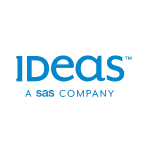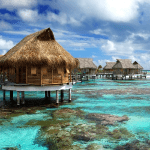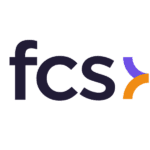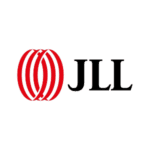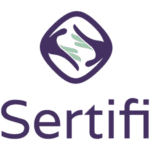 Meetings and Events (M&E) spaces can account for a significant portion of a hotel’s financial performance today. In fact, for many hotels, meetings and event spaces can contribute up to 60 percent of overall revenue. This makes it particularly surprising then that many hoteliers still are not leveraging these areas strategically, resulting in missed opportunities and limiting business growth.
Meetings and Events (M&E) spaces can account for a significant portion of a hotel’s financial performance today. In fact, for many hotels, meetings and event spaces can contribute up to 60 percent of overall revenue. This makes it particularly surprising then that many hoteliers still are not leveraging these areas strategically, resulting in missed opportunities and limiting business growth.
A major barrier for hoteliers in relation to their M&E spaces is the complex nature of function spaces, which can result in poor visibility of booking demand and opportunity, causing these areas to be overlooked and underestimated.
To better maximise revenue opportunities from meeting and event spaces, hotels need to foster cross-departmental collaboration, along with leveraging advanced technologies and data visualisation for informed decision-making.
Choosing the right M&E business
With a lack of demand forecast visibility for their M&E spaces, hoteliers often accept group business on a first-come, first-served basis – particularly during softer booking periods. This is a short-sighted approach though, and can result in a hotel having to turn away higher paying business due to accepting the first (and perhaps lowest) offer.
Maximising the potential of event spaces requires more than securing bookings for as many events as possible—it also requires strategic analysis on which business is the right business to take.
Demand for rooms and event spaces can fluctuate, and that demand level will impact decision making around which business is the best business to take. For instance, forecasts could indicate elevated demand during a booking window. If so, a hotel should reconsider immediately accepting a group that would only utilise half of its event space capacity, or if it is better to wait for another booking opportunity that would potentially use the whole space and have a much larger spend.
Foster cross-departmental collaboration
In order to maximise M&E business, hoteliers need to ensure closer collaboration between sales and catering processes. The revenue opportunities presented by M&E spaces mean hoteliers need to have an integrated approach to sales, catering and revenue management in place—and the right technologies to support this.
Key performance indicators like meeting room occupancy, revenue per square metres or foot, attendee density, and revenue per attendee should also be agreed upon and worked towards by cross-departmental teams. Staff must be supported through educational materials and training sessions that help teams learn to manage function space inventory in a scientific and methodological way.
Data visualisation for better decision-making
At a basic level, event space maximisation often starts with dividing rooms into smaller sections to get more attendees on location simultaneously. It also means coordinating meeting schedules to bring in customers who are projected to spend high amounts of money on ancillary goods and services. However, without an effective method for predicting future demand, it can be challenging for hoteliers to understand what M&E opportunities are possible, how much business is available, what each group would be willing to spend, and how much to charge for each event space.
Hotels need to have access to advanced M&E optimisation tools that improve their demand forecasting, as simply operating with a spreadsheet and intuition is likely to miss significant revenue-generating opportunities.
Revenue visualisation tools specifically designed for hoteliers allow users to process large data sets quickly and easily. The solutions can track inquiry trends, forecast demand, set optimised rates, measure performance, report findings, and identify new opportunities for business, all in one place, and at a far more detailed and scientific level than even the smartest revenue manager with a colour-coded spreadsheet could ever achieve alone.
Increased access to data that was previously difficult to source (and understand) has changed the understanding of M&E business opportunities and allowed for a much more sophisticated selling strategy.
Hoteliers understand that forecasting is critical in determining pricing strategies across their properties. However, unlike hotel rooms, many hotels are unable to properly forecast meetings and events space utilisation. For instance, say a hotel receives 20 percent more leads on weekdays than on the weekend; should it charge the same price? Today’s advanced meetings and events strategy solutions help hoteliers to analyse demand patterns, therefore determine pricing strategy by high, medium, low or distressed periods throughout the year. The benefit of this approach is that sales managers will be more confident in client negotiations as they are aware of demand patterns and their ‘walk-away’ price for group bookings or events business.
Utilise revenue management technology for group business
Using an advanced revenue management system (RMS) for group pricing and forecasting allows a sales manager to easily and efficiently decide whether a group booking will make the hotel more money than if they held the same rooms for transient business and respond back quickly with the optimal price that takes into account ancillary spend for maximum profit.
With an advanced RMS, hotels can optimise profitability by forecasting group demand and group wash by room type and segment. Group pricing through an RMS should not only advise to book a group but determines the greatest profit return through automatic analysis of multiple arrival date scenarios. Reports and graphs made available within the RMS can help inform sales and revenue teams of the optimal rates for a range of arrival dates, depending on how flexible the group is. Hotel groups with multiple properties in a market can also maximise incremental revenue by evaluating a group across the cluster of properties to make the best decision for the estate.
Maximise profits from M&E spaces
To unlock the revenue potential of M&E spaces, hotels must adopt a holistic approach. This includes making informed decisions about which business to accept based on demand forecasts, fostering closer collaboration between sales, catering, and revenue management teams, and leveraging advanced data visualisation and optimisation tools. By implementing these strategies, hotels can better understand and predict demand patterns, set optimised pricing, and ensure that they are making the most profitable use of their spaces.



